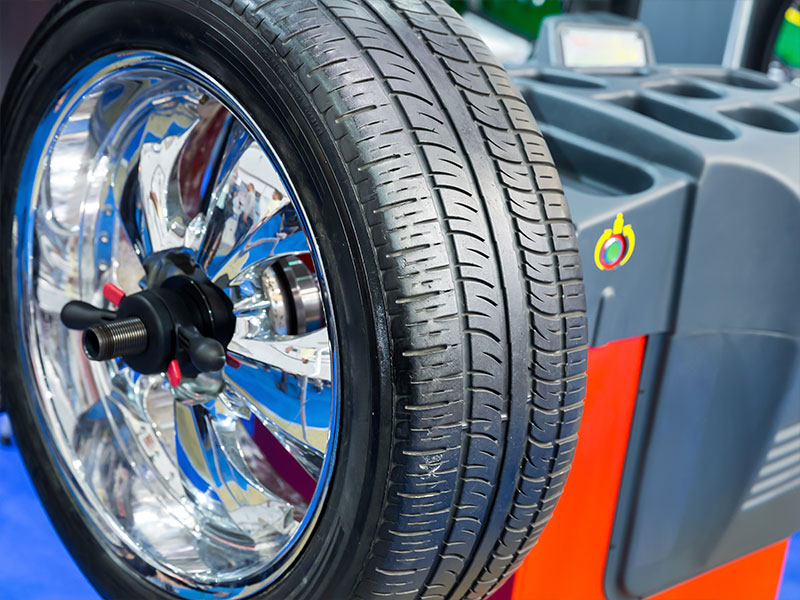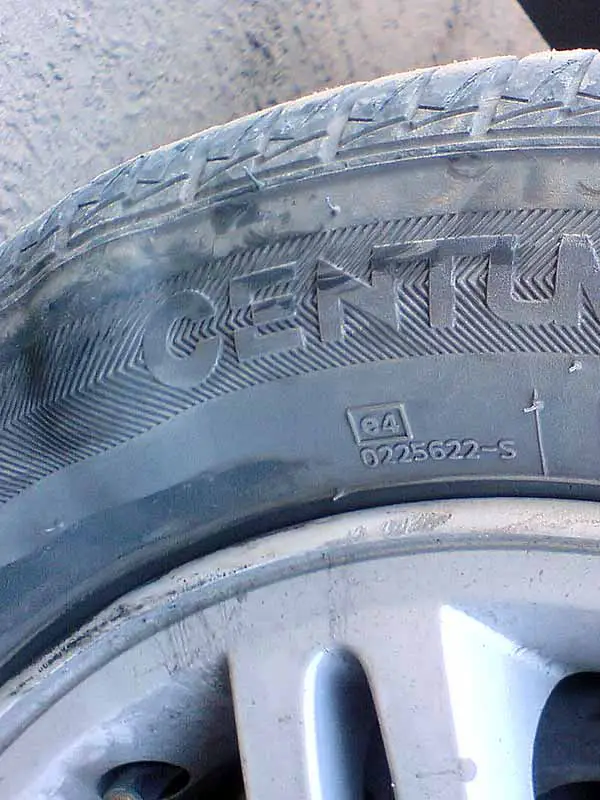It’s important to have your tires rotated on a regular schedule. Not only to help them last as long as possible, but to meet the requirements of your tire warranty.
Almost always though, your car or truck will feel a little different and unfamiliar after a tire rotation service has been performed. This is because the tires need to wear into their new positions and smooth out. It usually takes a few miles before they will begin to feel familiar again.
This isn’t always the case though. Often, unusual vibrations and noise after rotation can be a sign of an underlying problem.
Car Feels Weird After Tire Rotation
It’s common for your car or truck to feel weird after tire rotation. It takes 50 miles or so for your tires to break-in and smooth out in their new positions. If there is excessive vibration and noise after rotation, or vibration and noise get worse, you should have your vehicle check for a tire balance or alignment problem.
Car Drives Different After Tire Rotation
There are many reasons that a car may drive differently after having the tires rotated. Your car or truck should feel like it drives a bit differently immediately after tire rotation. When the tires have been rotated, they need time to break in and wear into their new positions. This weird feeling should go away after 50 miles or so.
There are problems that can cause the way your vehicle drives to change, possibly for the worse:
Directional Tires
If you have directional tires, they can not be rotated normally. Directional tires must only be rotated front to rear. Directional tires can only spin in one direction so when they are mounted on a wheel they can only be used on one side of your car or truck.
If cross rotated, directional tires will not grip properly and can not only feel weird, but be dangerous to drive on in the wrong weather conditions.
You can tell if your tires are directional by looking at the sidewall of the tire. If there is an arrow indicating the direction of spin, your tires are directional. Don’t confuse this with an indication that describes which side of the tire should face outward. These are asymmetrical tires and can spin in either direction.

Out Of Balance Tire
Car tires that are out of balance can create a vibration in the steering wheel or also cause some noise. More severe tire balance problems can even cause the car to shake.
Tires that are out of balance on the rear are much less noticeable. Rear tires aren’t connected to the steering wheel and are further away from the driver.
When tires are rotated, the rear tires usually end up on the front axle. If a rear tire has developed a balance issue it will suddenly become much more obvious after tire rotation.
Tires can lose balance over time as they wear. They have also been known to lose wheel weights if they weren’t well attached during balancing. Some clip-on weights can be more easily hit by curbs or debris and knocked loose as well.
Uneven Tire Wear
Uneven wear patterns can cause a rougher and odd feeling ride immediately after having a tire rotation. The most common source of poor tire wear that will cause vibrations and noise after rotation is an alignment problem.
If your tire wear pattern issues were diagnosed when your tire rotation was performed and an alignment was performed, the tires should wear in and smooth out over time.
If wear patterns are the source of your problem and your car has not been properly aligned in quite some time, you should have an alignment service done so that the uneven wear patterns don’t come back and cause more accelerated tire wear, noise, and vibrations.

Damaged Tire
Damaged tires can cause odd sensations while driving. Broken belts in the sidewall or under the tread can cause a tire to become out-of-round. This can affect grip, cause vibrations and noise, and be dangerous.
Tires should be inspected for damage during rotation, but more minor damage can go unnoticed. If your tires have any damage they will need to be replaced, and should be replaced in pairs.
What Happens If Tire Rotation Is Wrong?
In general, tire rotation that isn’t done according to the best rotation pattern simply won’t help your tires wear as evenly or last as long as they could or should.
If you have directional tires however, this can be a serious problem that will prevent the tires from being able to perform properly. This is especially concerning in wet conditions where the tires will not be able to shed water well and can be dangerous.
Staggered wheels and tires also affect the ability to use common tire rotation patterns. Staggered wheels and tires are sized differently front to rear. This means that wheels and tires on the front axle can’t be mounted on the rear axle. Staggered wheel sets can only be rotated side to side.
Having improperly sized wheels and tires can cause handling problems and reduce traction in situations the staggered wheel and tire design was designed to correct.
You can tell if you have staggered tires by checking the size on the sidewalls of your front and rear tires and checking for differences.
Do Tires Need To Be Aligned After Rotation?
It’s not necessary for tires to be aligned after rotation, but it is recommended that you have alignment service performed every other tire rotation service. Tires should be rotated typically every 5,000 miles. An alignment service should be performed every 10,000 miles.
It’s not excessive to have an alignment performed every tire rotation however. Tire rotation intervals are often recommended by vehicle manufacturers every 6,000 or 7,500 miles. I recommend an alignment service be performed every other tire rotation to group multiple services into one trip to your tire shop.
Alignment doesn’t easily come out of spec unless there is damage or wear to suspension components. Damage can occur due to potholes and curb strikes. Wear of bushings and shocks can allow the suspension to move more or shift and cause an alignment problem.
Having an alignment service performed regularly ensures that damage and wear can be discovered and addressed before a problem causes excessive tire wear problems or cause other more severe issues.
Do Tires Need To Be Balanced After Rotation?
It’s not necessary for tires to be balanced after rotation, but it is recommended that you have your tires balanced every other tire rotation service. Tires should be rotated every 5,000 miles. Tire balancing should be performed every 10,000 miles.
Tires will lose balance slightly as they wear and these imbalances can lead to uneven wear patterns and vibrations. On occasion, cars and trucks can lose wheel weights that will throw off balance significantly. Ultimately unbalanced tires shorten the life of your tires, reduce traction, and cause annoying tire noise, and can create a less smooth and comfortable ride.
Having tires balanced on a regular schedule will ensure that they are performing their best and that any more serious balance problems will be identified and corrected early.
Vibration And Noise After Rotation
Moving wheels and tires to a different position usually causes some noise and occasionally some minor vibration immediately after rotation. It takes 50 miles or so for the tires to wear into their new positions and smooth out.
If vibration and noise after rotation continues well beyond the normal 50 mile break-in period, you likely have an underlying problem that should be addressed. This is especially true if the vibration and noise gets worse instead of better.
Final Thoughts
Following a regular tire rotation schedule is important for a few reasons. It will ensure you get the most life out of your tires, it will help your tires wear more evenly across the tread, and, if done according to your tire manufacturer’s requirements, will ensure that you maintain your tire warranty.
Your car or truck will feel a little weird for a few miles after a rotation service. This is normal. Excessive vibration and noise after rotation however can be a sign that you have alignment issues or a tire imbalance that needs to be addressed.
Usually these problems are exposed by the service tech during the rotation but can sometimes go unnoticed. Tire rotation will often make these issues much more noticeable.
Resources
Below are some links you may find helpful when learning about tires




